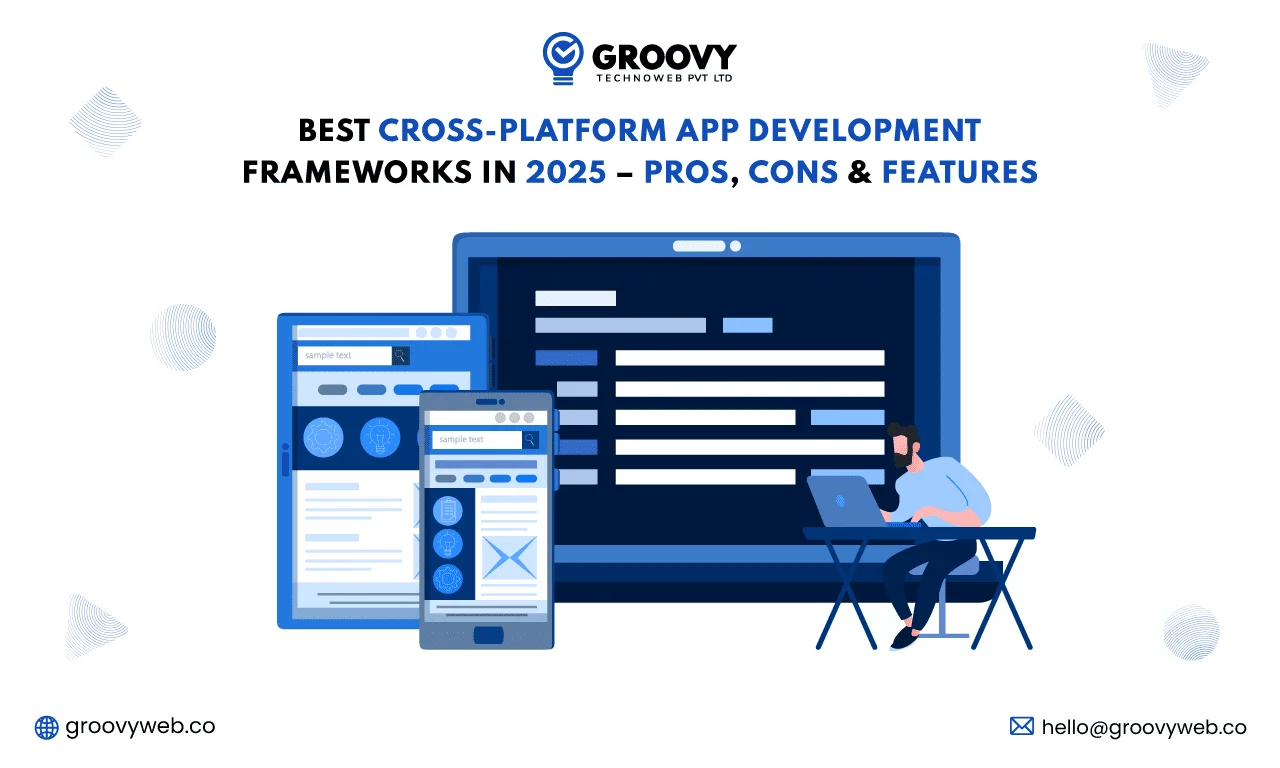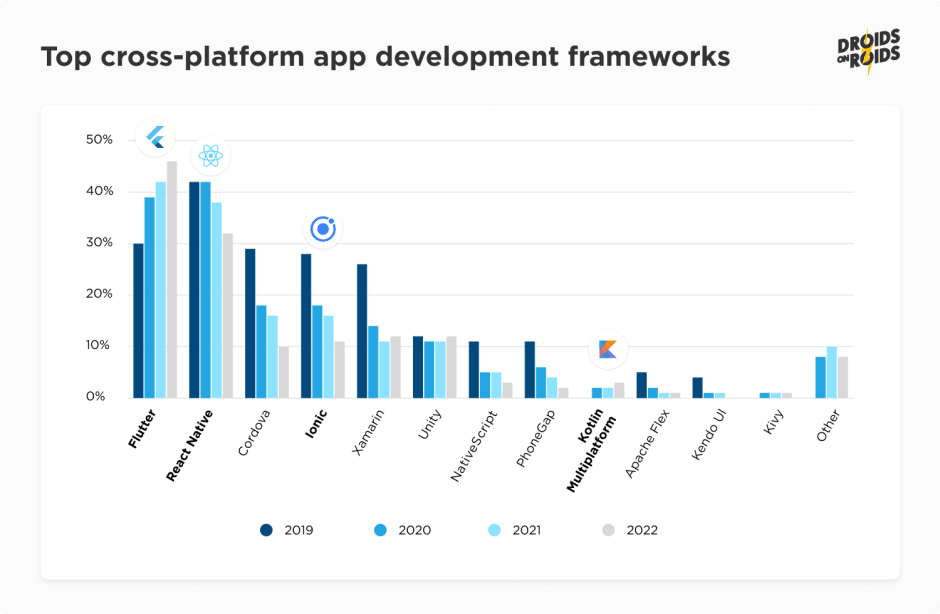Are you ready to take your app development skills to the next level in 2025? Imagine creating stunning mobile applications that work seamlessly across different platforms without the hassle of coding separately for each one.
You’re about to discover the best cross-platform mobile frameworks that can make your dream a reality. Whether you’re a seasoned developer or just starting, these frameworks offer the tools you need to build exceptional apps efficiently and effectively. Dive in to learn how you can streamline your development process, save time, and reach a wider audience with your apps.
You’ll be amazed at what you can achieve with the right framework at your fingertips.
Flutter: Fast Development
Flutter makes apps look the same on all devices. This is called cross-platform. It saves time because developers write less code. Flutter has a big library of widgets. These widgets help create pretty designs. The framework is also open-source. This means many people help make it better. Apps made with Flutter run very fast. Developers don’t have to wait to see changes. They see them immediately.
Not everything in Flutter is perfect. It is still new and might not have every feature. Some complex animations can be hard to make. Flutter apps can be large in file size. This means they take more space on devices. Sometimes, finding plugins for special features is hard. It may not work well with all hardware.
Flutter has a bright future. More people are using it every day. Google, a big company, supports it. This means it will get better. Developers are adding new features. The Flutter community is growing fast. More tutorials and help are available. Many believe it will be a top choice for app making.

React Native: Popular Choice
React Native is a favorite among developers. It allows easy building of mobile apps. Using one codebase saves time and effort. Apps made with React Native look like native apps. They run on both iOS and Android. This framework uses JavaScript. Many developers know JavaScript well. This makes React Native easy to learn. There’s a big community to help with questions. Updates and tools are regularly available.
React Native has some limitations. It might not use all features of a device. Some parts can be slower than native apps. Debugging can be tricky at times. It needs third-party libraries for some features. Not all developers find it easy. Some may prefer pure native development.
React Native gets updates often. Recent changes focus on performance. New tools help in building apps faster. The community grows with each update. Developers find more resources online. Documentation is improved for better understanding. These updates make React Native even more popular.
Xamarin: Microsoft Backed
Xamarin helps build apps for Android and iOS. Use a single Ccodebase. It saves time. Code sharing is easy. Developers love it. It has a strong community. Many tutorials are available. Xamarin offers native performance. Apps run fast. They feel smooth. Users like that.
Xamarin apps can be large. They need more storage space. Some features are platform-specific. Not all tools work everywhere. Xamarin updates may lag behind. Learning curve can be steep. New developers might struggle. The UI design can be limited. Some custom designs are hard.
Xamarin works well with Visual Studio. It supports Azure services. This is great for Microsoft users. Cloud integration is smooth. Developers use Microsoft tools easily. Share projects between teams. Efficiency improves. It fits well with existing systems. Companies enjoy this benefit.

Ionic: Web Technologies
Ionic uses HTML, CSS, and JavaScript. These are common web languages. It is easy to learn and use. Ionic has many UI components. These make apps look nice. Developers can build apps for iOS and Android. They use the same code.
Ionic apps run inside a webview. This is like a small browser. It may be slower than native apps. Performance depends on how well you write the code. Good coding can make apps run fast. Sometimes, extra plugins are needed for better speed.
Ionic plans to improve tooling and support. They want to add more features. Community updates help make it better. Developers can expect new tools and plugins soon. It keeps evolving with new technologies.
Swiftui: Apple’s Approach
SwiftUI makes coding easy and fun. Designing interfaces is simple with it. It uses less code to create apps. Developers save time and effort. SwiftUI is also fast and reliable. Apps run smoothly and look great. It works well with other Apple tools. This makes it a strong choice for developers.
SwiftUI is mostly for Apple devices. It may not work well on others. Some older devices might not support it. This can be a problem for users. Developers need to check device compatibility. It is important for app success.
New features will come in 2025. SwiftUI will get better and faster. Apple plans to add more tools for developers. This will help create even better apps. Updates will bring exciting changes. Developers should stay informed about them.

Kotlin Multiplatform: Emerging Tool
Kotlin Multiplatform helps make apps for many devices. Code can be shared across platforms, saving time. This means less coding work for developers. It also reduces bugs because the same code runs everywhere. Kotlin is also easy to learn for many programmers. It uses simple syntax, making it friendly for beginners. Teams can collaborate better because they use the same language. This increases teamwork and speeds up projects.
There are some challenges with Kotlin Multiplatform. It is still new, so not all features work smoothly. Some libraries are missing or not yet ready. Developers might find integration tricky with existing systems. They may also need extra training to use it well. Another challenge is the limited community support. Fewer experts means finding help might take time. But improvements are happening fast.
Kotlin Multiplatform is growing quickly. More companies are exploring its potential. By 2025, it may become a top choice for developers. New tools and updates make it more reliable. The community is expanding, bringing more resources. It is expected to support more platforms. This makes it a promising tool for future projects. Many developers are excited to see its growth.
Comparative Analysis
React Native offers fast refresh and hot reloading. Flutter provides native performance with GPU rendering. Xamarin uses C and offers native-like performance. Each has unique strengths. React Native excels in JavaScript integration. Flutter’s Dart ensures smooth animations. Xamarin leverages Microsoft technologies. Choosing depends on project needs.
React Native is simple for web developers. Flutter uses Widgets for easy design. Xamarin integrates with Visual Studio. React Native has a large library. Flutter’s UI components are user-friendly. Xamarin’s XAML makes design intuitive. Developers find tools convenient.
React Native has a vast community. Flutter’s community is growing rapidly. Xamarin benefits from Microsoft’s support. React Native offers numerous tutorials. Flutter has active forums. Xamarin receives regular updates. Each community aids learning and troubleshooting.
Choosing The Right Framework
Each project has different needs. Some need high performance. Others need rich features. Understanding these needs is crucial. Choose a framework that fits them well. This ensures the project runs smoothly.
Every team has unique preferences. Some like easy-to-learn frameworks. Others prefer tools they know well. Consider their comfort and expertise. This helps speed up the development process. It also boosts team morale.
Budget is important for any project. Some frameworks are cost-effective. Others might need more investment. Balancing quality and cost is key. Choose one that fits your budget. Save money without sacrificing quality.
Frequently Asked Questions
What Are Cross‑platform Mobile Frameworks?
Cross-platform mobile frameworks allow developers to build apps for multiple platforms using a single codebase. They save time and resources by eliminating the need for separate native apps. Popular frameworks include Flutter, React Native, and Xamarin, which provide tools and libraries to enhance app development efficiency across Android and iOS.
Which Frameworks Are Leading In 2025?
In 2025, Flutter, React Native, and Xamarin continue to lead the cross-platform mobile framework market. Flutter, known for its rich UI capabilities, is popular among developers. React Native offers seamless integration with native components, and Xamarin provides robust performance and reliability, especially for enterprise solutions.
Why Choose Flutter For App Development?
Flutter is a popular choice due to its fast performance and expressive UI. It allows developers to create visually appealing apps with smooth animations. Flutter’s hot reload feature speeds up development, making it ideal for prototyping. Additionally, it supports both Android and iOS, ensuring broader reach for your app.
How Does React Native Enhance App Performance?
React Native enhances app performance by using native components, which deliver faster and smoother experiences. It bridges JavaScript code with native APIs, optimizing interactions and animations. Developers can leverage React’s component-based architecture, leading to efficient code reuse and improved app responsiveness.
Conclusion
Choosing the right framework is crucial for app success. Each offers unique strengths for different needs. Consider your project requirements carefully. Think about developer skills and budget constraints too. React Native and Flutter are popular choices. Xamarin and Ionic also have strong advantages.
Explore each option’s community and support. This helps in troubleshooting and growth. Remember, technology evolves rapidly. Stay updated with the latest trends. Your choice today impacts future app performance. Make informed decisions for your app’s success.
Read More:
- Network Automation Tools ROI: Boosting Efficiency & Savings
- Noise‑Cancelling Earbuds Battery Life: Maximize Your Usage
- Ci/Cd Pipeline Tools Comparison: Boost Your DevOps Efficiency
- Serverless Vs Containerized Workloads: A Comparative Guide
- Vr Content Creation Tools 2025: Revolutionize Your Creations
- Best Gaming PC Build under $1500: Ultimate Performance
- Javascript Frameworks Benchmark 2025: Speed & Performance
- Quantum Cryptography Implementation Challenges: Unveiling Complexities

